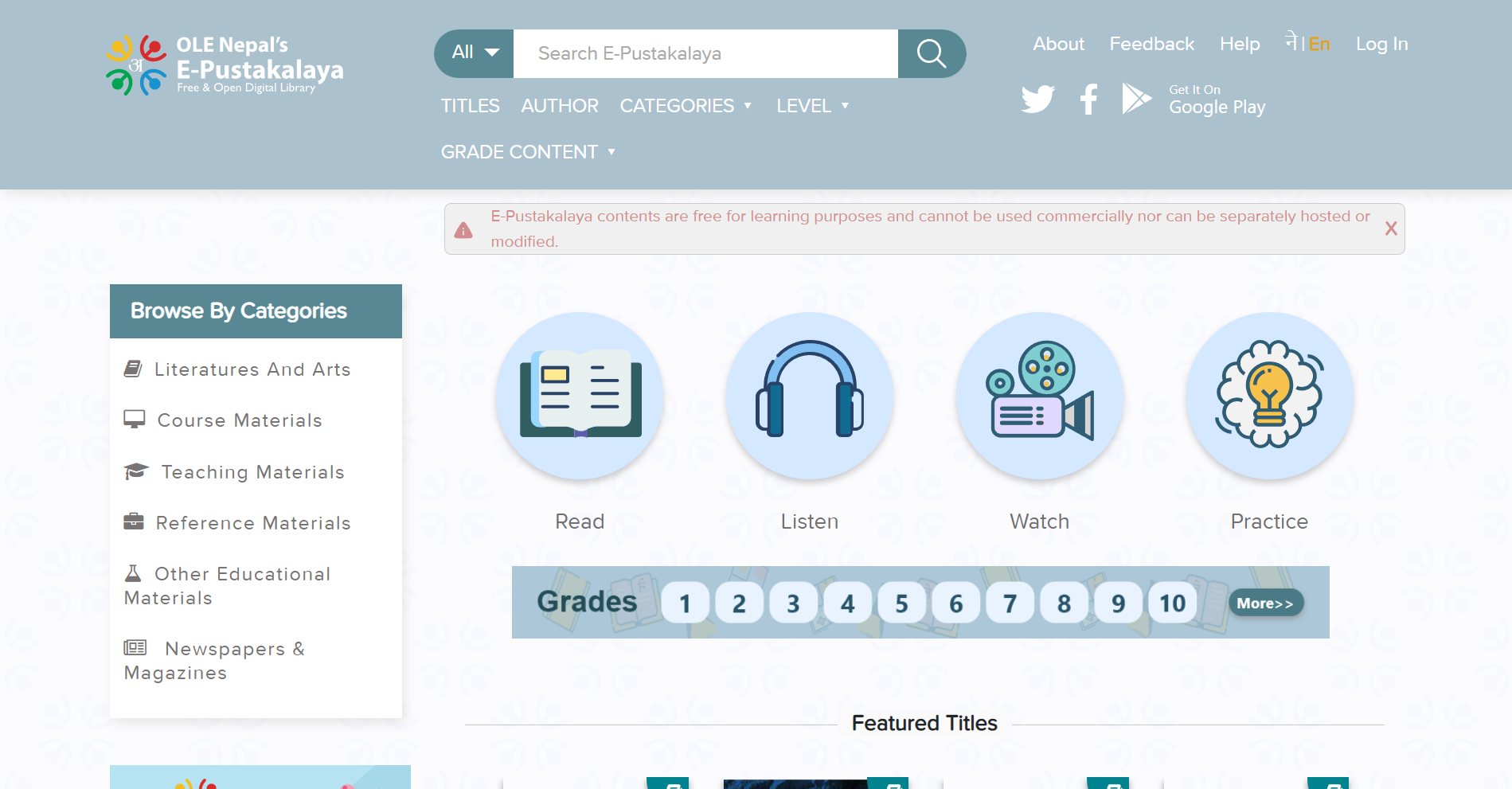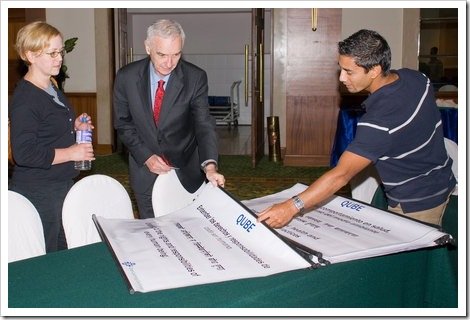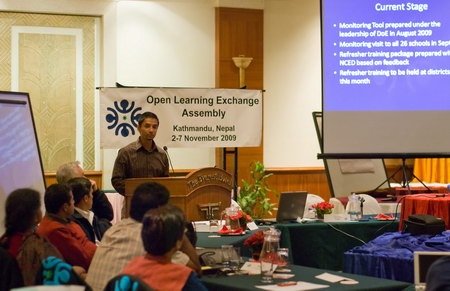193 Entries for “Recent Blogs”
-
 READ MORE
READ MOREMarch 19, 2010 | Learning Games Development | OLE Nepal
E-Pustakalaya Initiatives
OLE Nepal has managed to build partnerships with contemporary Nepali writers of children and other literature and acquired a large number of their work for E-Pustakalaya. Two workshops were held, in April and in October 2009 at Martin Chautari, for writers. Those present included some of the most prominent writers in Nepali contemporary literature. A large number of authors have readily given their material to the library for free. Given the context of Nepal where reading books, aside from school books for kids, is hardly encouraged, the authors are hopeful that E-Pustakalaya will expand the reach of their books in Nepal and abroad and encourage more Nepalis to read.
-
 READ MORE
READ MOREMarch 11, 2010 | Deployment | OLE Nepal
A month in the life of OLE Nepal Feb-Mar 2010
In early March, a team consisting of officials from the Department of Education (DoE), the World Food Programme (WFP), and OLE Nepal visited program schools in Dadeldhura. The purpose of the visit was to study the feasibility of expanding the program to two more schools in the district. The team consisted of the Deputy Director of DoE Mr. Baburam Poudel, who is also the government's focal person for the OLPC project, WFP's Country Programme Coordinator, Ms. Pramila Ghimire, and OLE Nepal's Executive Director, Mr. Rabi Karmacharya. The team was joined on the fourth day by the Director General of the DoE, Mr. Haribol Khanal, who took time out of his busy schedule to spend three days in Dadeldhura to gather first hand knowledge about the program. He was accompanied by the Chief District Education Officer of Dadeldhura, Mr. Ram Hari Das Shrestha. In addition to visiting one program school and one prospective school, he met with officials from the DEO to discuss ongoing education activities in the district.
-
 READ MORE
READ MOREDec. 1, 2009 | Program Updates | OLE Nepal
Refresher Training on ICT-integrated teaching Nov 2009
A residential refresher training on ICT-integrated teaching using OLPC laptops and OLE Nepal’s original content was held at the Government of Nepal’s Training Center in Rupandehi from November 22-25. In attendance were teachers and principals from three schools (Shree Pancha, Mahendra and Nepal Rashtra) and representatives from the District Education Office Kapilvastu.
-
 READ MORE
READ MORENov. 5, 2009 | Program Updates | OLE Nepal
Social Entrepreneur Rabi Karmacharya Reports Progress in Innovating Nepali Schools
Blogging from the Global OLE Assembly in Kathmandu, Nepal – Richard Rowe, founder of the Open Learning Exchange, puts a lot of emphasis on the need for social entrepreneurs in developing countries to catalyze a transformation in their schools. In each country where OLE is established, you will find a social entrepreneur leading the local OLE Center, bringing novel learning approaches into schools, and working with their government to scale up those innovations proven to improve children’s access to quality education.
-
 READ MORE
READ MORENov. 2, 2009 | Program Updates | OLE Nepal
Global OLE Assembly Opened by Social Entrepreneurs and Government Officials
Kathmandu, Nepal – The opening sessions of the first Open Learning Exchange Global Assembly took place on November 2 at the Everest Hotel in Kathmandu, Nepal. Among those in attendance were Mahashram Sharma (Director General of Department of Education); Lawa Dev Awasthi (Joint Secretary of Nepal’s Ministry of Education); Haribol Khanal (Executive Director of Nepal’s Curriculum Development Center); Prativa Pandey (Chairperson of the Board of Directors of OLE Nepal and Chair of the opening session); Richard Rowe (Founder and CEO of OLE International) and members of his team; Kedar Bhakta Mathema (Former Vice Chancellor of Tribhuvan University and the Chief of the advisory board of OLE Nepal); Rabi Karmacharya (Executive Director of OLE Nepal) and members of his team; and the representatives from the various OLE Centers around the world participating in the conference.